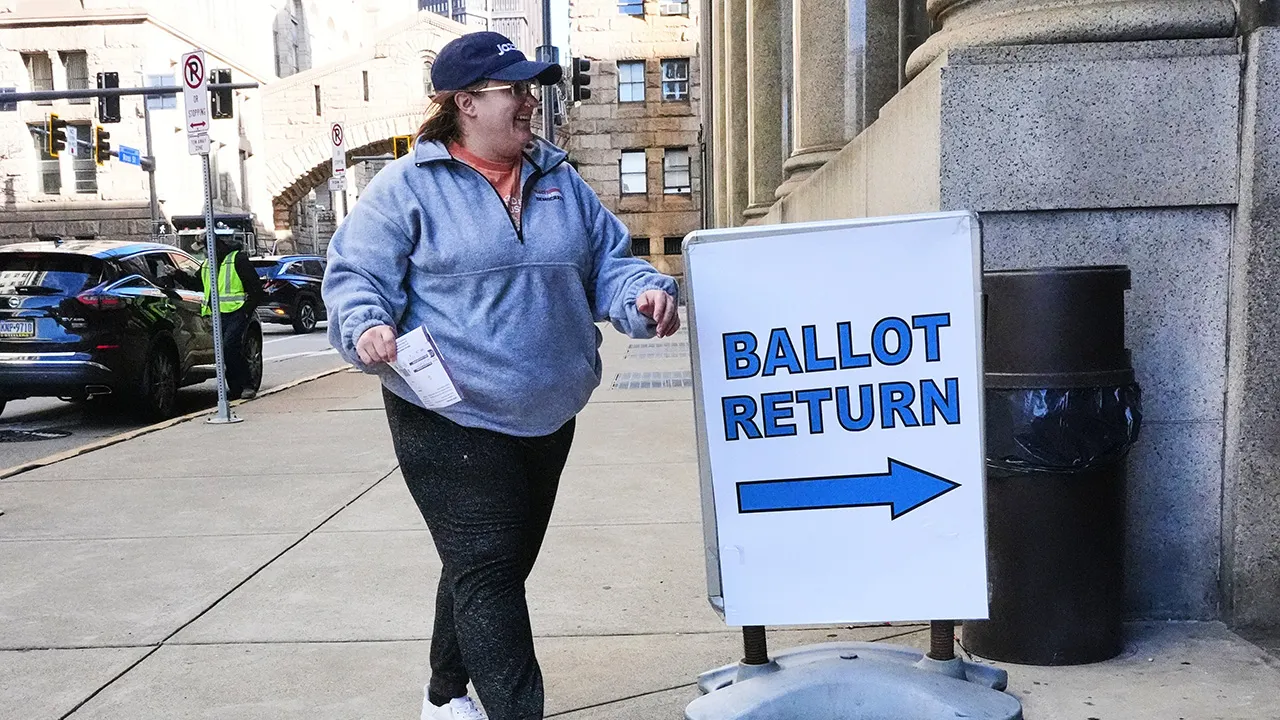Vermont
The 7 Best Vermont Events This Week: January 29-February 5, 2025 | Seven Days

Tales From Telluride
Saturday 1
Telluride, Colo., traveling film festival Mountainfilm on Tour arrives at Southern Vermont Arts Center in Manchester with its curated selection of action-packed, culturally rich documentary shorts. The flicks explore environmental, political and social justice issues, while simultaneously celebrating the indomitable spirit of world-class athletes.
Flake News
Saturday 1
Putney’s Sandglass Theater kicks off its 18th annual Winter Sunshine Series with The Snowflake Man. Local entertainer Sarah Frechette of Puppetkabob spellbinds viewers with Czech-style marionettes in a performance inspired by Wilson “Snowflake” Bentley — the self-educated Vermonter who attracted global attention in the 1920s with his groundbreaking snow crystal photomicrography.
You Had Me at Cello
Friday 31
Lane Series programming returns this month with fearless pianist Michelle Cann and commanding Cuban American cellist Tommy Mesa. The virtuosic pair assumes the spotlight at the University of Vermont Recital Hall in Burlington for an arresting showcase of their musical gifts. The resulting sound? Exquisite modern chamber music peppered with charisma and innovation.
Ice, Ice Baby
Friday 31-Sunday 2
Skiers, riders, music enthusiasts and dog lovers accumulate at Killington Resort for the eagerly awaited Subaru WinterFest — a frosty, fun-filled party for mountain adventurers. Activities run the gamut from a guided uphill tour to live bluegrass performances, as well as tasty treats, gear demos and a special appearance by the Avalanche Rescue Dogs.
Knight Life
Saturday 1 & Sunday 2
Hear ye, hear ye! Vermont Gatherings’ eighth annual Winter Renaissance Faire at the Champlain Valley Exposition in Essex Junction delivers next-level medieval merriment. Fair maidens and noble knights of all ages revel in sundry performances, including singing, dancing, reenactments and fight demonstrations, and browse more than 85 artisan and craft vendors’ authentic wares.
Wise Words
Wednesday 5
Farmers Night — a Statehouse tradition harking back more than 100 years — presents Vermont Reads author Kenneth M. Cadow under Montpelier’s golden dome. The lauded local educator reads excerpts from his 2023 young adult novel, Gather — a National Book Award Finalist — and discusses topical rural themes such as addiction, food and housing insecurity, and the power of community.
Eye of the Bee-holder
Ongoing
Levon Biss‘ macrophotography exhibition, “Extinct and Endangered: Insects in Peril,” at the Fairbanks Museum & Planetarium in St. Johnsbury highlights the insidious yet sharp decline of countless species. The detailed photographs feature specimens from the American Museum of Natural History’s collection and highlight both their teeny intricacies and their huge importance to our ecosystem.

Vermont
The Supreme Court hears challenges to Trump’s tariffs with Vermont ties – VTDigger

This story is based on stories by Violet Jira published on Nov. 5, 2025 by NOTUS, one before and one after the oral arguments.
The U.S. Supreme Court heard arguments Wednesday related to the legality of President Donald Trump’s use of tariffs in a case that won’t just be deciding the fate of his trade policy, but also could redefine the limits of presidential economic power.
The hearing involved appeals in a pair of cases that challenge the Trump administration’s use of the International Emergency Economic Powers Act, including one with Vermont ties. Trump has used the law to bypass procedural norms and place extensive tariffs on enemies and trading partners alike without authorization from Congress.
READ MORE

One of the cases includes Terry Precision Cycling, or Terry Cycling, a women’s cycling apparel company, as one of five small business plaintiffs. The group sued Trump and his administration in the U.S. Court of International Trade in April. In May, a panel of three federal judges struck down most of the president’s tariffs. The U.S. Court of Appeals for the Federal Circuit also largely backed the plaintiffs. The case was combined with another brought by private organizations impacted by the tariffs in Wednesday’s arguments in the Supreme Court.
The court also heard from a representative of 12 attorneys general, including Vermont Attorney General Charity Clark, who sued on similar grounds.
During the arguments, Solicitor General D. John Sauer defended the Trump administration’s actions — sometimes by contradicting the president.
Sauer faced a slew of skeptical inquiries from the justices who seemed to take issue with many of the Trump administration’s arguments, including that the president has broad authority to respond to international emergencies, Congress delegated the presidency this power, and tariffs are not taxes.
Since the Constitution gives Congress the power to tax, the claim that tariffs are not a tax was central to Sauer’s argument, despite the fact that the president has framed them as revenue-raising.
“We don’t contend that what’s being exercised here is the power to tax,” Sauer said. “It’s the power to regulate foreign commerce. These are regulatory tariffs. They are not revenue raising tariffs.”
Trump regularly says tariffs are making the country richer. And earlier this year, the White House floated using tariffs as a revenue raiser to offset the cost of the One Big Beautiful Bill Act.
Justice Sonia Sotomayor, who spoke recently at the University of Vermont, made clear that she didn’t buy Sauer’s argument on tariffs versus taxes.
“You say tariffs are not taxes, but that’s exactly what they are,” she said. “They’re generating money from American citizens, revenue.”

‘Simply implausible’
How the justices decide the case will have major implications not just for Trump’s agenda but for how much unilateral power presidents have to regulate commerce.
During the arguments, Justice Neil Gorsuch leaned heavily into the question of congressional authority. He seemed to take issue with the fact that it would be difficult for Congress to reclaim that authority should the Supreme Court give the Trump administration what it was asking for.
“Congress, as a practical matter, can’t get this power back once it’s handed it over to the president. It’s a one way ratchet toward the gradual but continual accretion of power in the executive branch and away from the people’s elected representatives,” he argued.
Justice Amy Coney Barrett seemed skeptical of the scope of the reciprocal tariffs Trump has placed on dozens of countries, allies and trading partners alike.
“Is it your contention that every country needed to be tariffed because of threats to the defense and industrial base? I mean, Spain, France? I mean, I could see it with some countries, but explain to me why as many countries needed to be subject to the reciprocal tariff policy as are,” she asked.
The small businesses were represented by attorney Neal Katyal. He argued that tariffs are, in fact, a tax, and that the Trump administration was exceeding the authority Congress intended to give to the executive branch when it passed the International Emergency Economic Powers Act.
“It’s simply implausible that in enacting IEEPA, Congress handed the president the power to overhaul the entire tariff system and the American economy in the process, allowing him to set and reset tariffs on any and every product from any and every country at any and all times,” Katyal said.
“And as Justices Gorsuch and Barrett just said, this is a one-way ratchet,” he continued. “We will never get this power back if the government wins this case. What president wouldn’t veto legislation to rein this power in and pull out the tariff power?”
The Supreme Court has until the end of its term next summer to make a decision, but the case has so far been on an expedited track, leading some experienced court watchers to expect a decision before the end of the year.
Other routes for tariffs
The White House has projected confidence in its ability to win the case — press secretary Karoline Leavitt said officials believe the Supreme Court will rule in their favor. Still, contingency plans have long been in the works.
“The White House is always preparing for plan B,” she said at a briefing. “It would be imprudent of the president’s advisers not to prepare for such a situation. With that said, we are 100% confident in the president and his team’s legal argument and the merits of the law in this case, and we remain optimistic that the Supreme Court is going to do the right thing. The importance of this case cannot be overstated.”
Trump has used the threat of tariffs in matters far beyond trade. The administration used a tariff investigation to pressure Brazil over its decision to prosecute former President Jair Bolsonaro. Trump attempted to use trade negotiations to stop Canada from backing Palestinian statehood. The threat of steep tariffs has been an essential leverage point in his peace negotiations between countries like India and Pakistan, as well as Russia and Ukraine.
The Supreme Court’s decision could stymie all of this.
Administration officials have indicated that even if they lose the case, they would find another way to levy tariffs.
There are multiple legal avenues to enact tariffs. Top Trump trade adviser Peter Navarro has signaled the administration was considering use of Section 122 and then Section 301 of the Trade Act of 1974, if use of the International Emergency Economic Powers Act is deemed unlawful.
Multiple trade experts NOTUS spoke to said this would be the most plausible course of action for Trump to keep his tariffs alive if the court rules against him.
Peter Harrell, who served as senior director for international economics and competitiveness in the Biden White House, said “the most obvious choice” for the White House to temporarily maintain tariffs would be to invoke Section 122. That would allow tariffs of up to 15% for as long as 150 days on countries whose trade with the U.S. is unjustifiably imbalanced.
“That, to me, looks like the sort of obvious, immediate stop gap they could pull to keep many of their tariffs in place for a couple of months while they figure out what the longer term plan is,” he said.
Section 301 of the trade act allows an administration to launch investigations into specific countries and implement tariffs based on the results of that investigation. There are already active Section 301 investigations into China, Brazil and Nicaragua; the latter two were started under the administration of President Joe Biden. The Trump administration could begin more of them, but the investigations take months and again open the administration up to the possibility of lawsuits.
Over the past few months, the Trump administration has expanded its use of Section 232 of the Trade Expansion Act of 1962, which allows him to put restrictions on the import of certain goods if they are found after an investigation to threaten national security.
But none of these powers is as expansive as the International Economic Emergency Powers Act, which the Trump administration has used to enact crushing tariffs with the stroke of a pen.
The International Economic Emergency Powers Act “only requires a finding of a national emergency, which is a more unilateral power within the president to make that determination,” said Everett Eissenstat, a partner at Squire Patton Boggs who represented the Trump administration on international trade matters as deputy director of the National Economic Council during Trump’s first term. “There’s no investigation, there’s no congressional consultation, it’s just a declaration of emergency, and that unleashes the power to regulate commerce, regulate importation.”
He added that there “were certainly more limitations” on Section 301 and Section 232.
If the Supreme Court were to rule in the Trump administration’s favor, it’s possible that the ruling wouldn’t just give the administration the legal go-ahead on current tariff policy, but open the door for the International Economic Emergency Powers Act to be used even more broadly than Trump is currently using it.
For the importers, business owners, consumers and taxpayers who are impacted by the president’s trade and tariff policy, a decision from the Supreme Court in either direction is unlikely to offer significant relief from the pressures of the Trump tariff economy.
“Unfortunately, if you’re a business, you can celebrate a Supreme Court win if that’s the way it goes, but you’re not going to be off the hook,” Riley said. “Trump will continue to impose tariffs, continue to impose costs on Americans, but he just won’t have the unlimited authority that he’ll have if the Supreme Court allows the IEEPA tariffs to remain in place.”
Vermont
Tracking Vermont’s 2025 election day results

BARRE, Vt. (WCAX) – Voters hit the polls across the country on Tuesday, weighing in on everything from high-stakes political races to municipal funding.
In Vermont, towns looked to their residents to approve a myriad of projects.
Across the state, Vermont voters considered ballot items pertaining to flood mitigation, infrastructure projects, and a new career center.
After a full workday and an evening of volunteering at the Barre Community Justice Center, Becky Wigg took to the polls.
“I moved here five years ago during the pandemic and really found my community,” said Wigg.
She voted yes to Barre’s $2.4 million flood-resilient housing project and the $3.3 million new public works building, which will be built out of the flood plain.
“I voted yes for the bonds because I believe in Barre. I want to live in a thriving community where everyone has a safe place to live, an affordable place to live, and we have the public services and resources that we need,” said Wigg.
Barre’s unofficial election results show both ballot items were approved.
“Really transformational projects, these are generational things that we’ve been trying to solve, and I’m very, very pleased that the voters showed their confidence in these projects and approved them,” said Barre City Manager Nicolas Storellicastro.
The Hinesburg Record reports that bond issues of repairing two flood-damaged bridges and installing a new well were approved.
Brighton approved their $9.6 million bond to upgrade the town’s wastewater system. Cabot approved spending a quarter million dollars on flood mitigation.
Plainfield’s request to borrow $600,000 as part of a $9 million project to build 40 new homes failed.
And so did Berlin’s bond to form a four-season rec center, as reported by the Times Argus.
Also on central Vermonters’ ballots was the option to build a $149 million new technical education center.
Central Vermont will need to pool results from different towns to find out if the career center will happen. They expect the results on that to come out on Thursday.
Copyright 2025 WCAX. All rights reserved.
Vermont
Vermont knocks off Western New England 75-68
-

 Milwaukee, WI1 week ago
Milwaukee, WI1 week agoLongtime anchor Shannon Sims is leaving Milwaukee’s WTMJ-TV (Channel 4)
-

 News1 week ago
News1 week agoWith food stamps set to dry up Nov. 1, SNAP recipients say they fear what’s next
-

 Culture1 week ago
Culture1 week agoVideo: Dissecting Three Stephen King Adaptations
-

 Seattle, WA4 days ago
Seattle, WA4 days agoESPN scoop adds another intriguing name to Seahawks chatter before NFL trade deadline
-

 Seattle, WA1 week ago
Seattle, WA1 week agoFOX 13’s Aaron Levine wins back-to-back Jeopardy! episodes
-

 San Diego, CA1 week ago
San Diego, CA1 week agoAdd Nick Hundley, Ruben Niebla to list of Padres’ managerial finalists
-

 Education1 week ago
Education1 week agoOpinion | New York City Mayoral Candidates: Who Would Be Best?
-

 Business6 days ago
Business6 days agoCommentary: Meme stocks are still with us, offering new temptations for novice and unwary investors



















